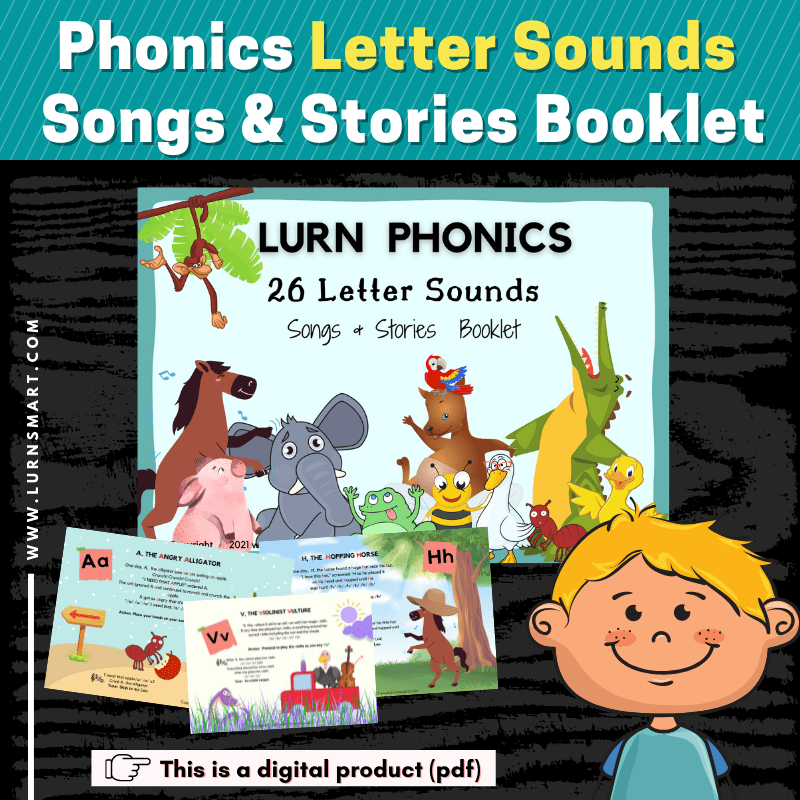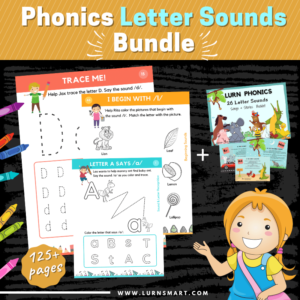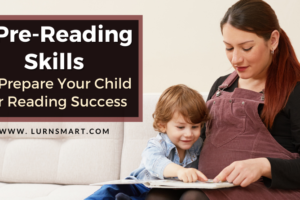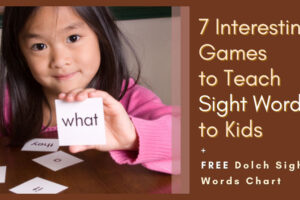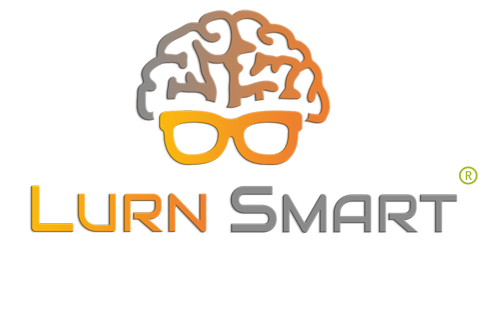5 Interesting Activities to Teach the Letter Sounds + FREE Printables
- Categories Early Learning, Reading
- Tags Reading time 8 min
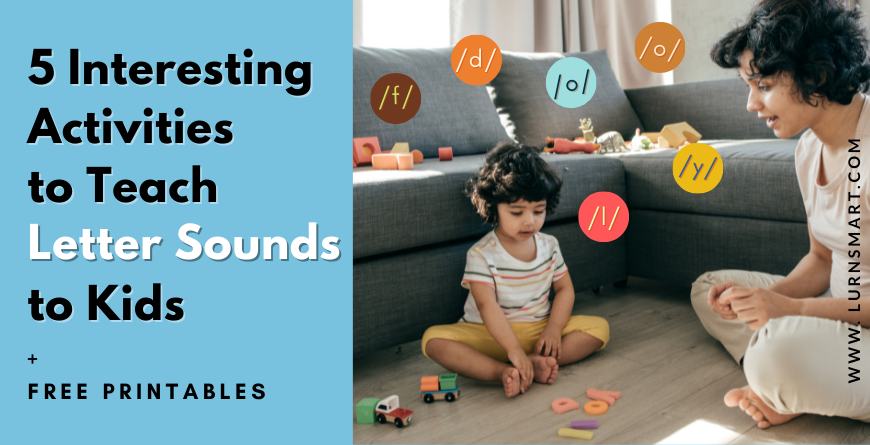
Are you looking for fun ways to teach the letter sounds to your child?
If so, read on, coz’ in this post I’m going to share with you 5 interesting ways to teach English alphabet sounds as well as provide you with all the necessary information and resources needed.
But before we get to the 5 interesting ways to teach English alphabet sounds, let me first address some frequently asked questions by parents who are new to Phonics instruction.
So if you are in a hurry, you can click the question that is more relevant to you and get to that particular section of the blog post.
If not, I suggest you read through the entire post. I promise you will find the information provided useful!
For all my other friends who are eager to learn about the 5 interesting ways to teach alphabet sounds to kids, simply click here.
- What are letter sounds?
- What are consonant and vowel sounds in English?
- Should I teach letter names or letter sounds first?
- What is the correct order to teach letter sounds?
- How many letter sounds should I teach at a time?
>>>>> Grab your FREE letter sound activity printables here<<<<<
Q1: What are letter sounds?
Just like how a dog says ‘woof’ and a cat says ‘meow’, each letter in the English alphabet says a sound.
So letter sounds, also known as ‘alphabet sounds’ are nothing but sounds that the letters of the alphabet make.
If you are new to letter sounds, check out my video The 44 Phonics Sounds in English to learn the 26 letter sounds.
Q2: What are consonant and vowel sounds in English?
There are 26 letters (A-Z) in the English alphabet. Out of which, 5 letters (a, e, i, o, u) are vowel letters and the rest are consonant letters.
The sounds that the 5 vowel letters make are called ‘vowel sounds’ also known as ‘short vowel sounds.’
The sounds that the consonant letters make are called ‘consonant sounds’.
Q3: Should I teach letter names or letter sounds first?
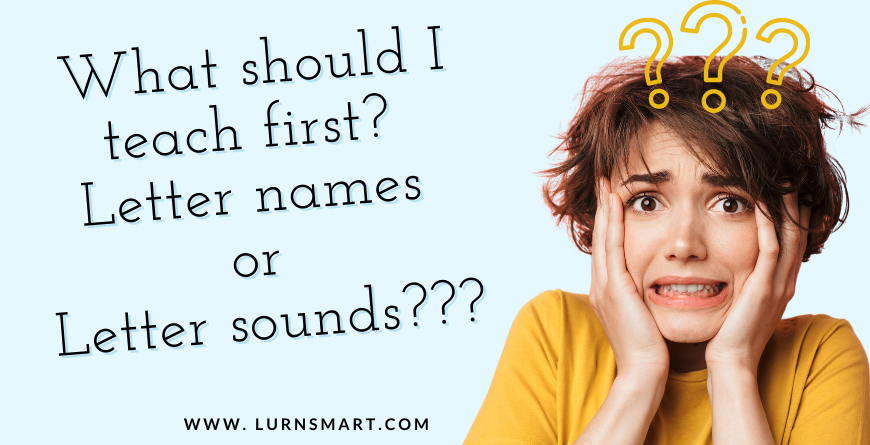
Now that we have learned what alphabet sounds are, the next question that most parents have is ‘what should I teach first—letter names or letter sounds?’
If you ask 3 preschool teachers, you’ll get three different answers!
The first preschool teacher might suggest that you teach letter sounds first because learning letter sounds is what would help your child read those simple words in children’s books.
The second preschool teacher might say quite the opposite—teach the letter names first because what’s the hurry, children can learn sounds after learning the letter names.
The third preschool teacher might say that BOTH letters and sounds are important, so teach them together.
If you ask me, it doesn’t matter what you do as long as your child enjoys what he or she is learning.
However, BOTH letter names and letter sounds are equally important!
So I suggest, teach both letter names and letter sounds together just like how we do in real life.
“This is a dog and the dog says woof.”
We don’t go, “Look this is a woof” and after a couple of months say, “Hi, listen! That is not a woof! That is a dog and the dog says woof.”
If we do this, don’t you think it would be really weird and confusing to the child?
So when it comes to teaching letter sounds, let’s do what we do in real life!
“This is letter A and letter A says /a/.”
Remember, when information is provided in a clear, engaging way, children have no problem processing it!
So the bottom line is, if you make learning letter names and sounds fun and interesting, your child will simply enjoy learning BOTH letter names and letter sounds.
If you want to learn fun ways to teach the letter names and shapes, check out my blog post 7 Playful Ways to Teach Alphabet Letters for Kids + FREE Printables.
Q4: What is the correct order to teach letter sounds?
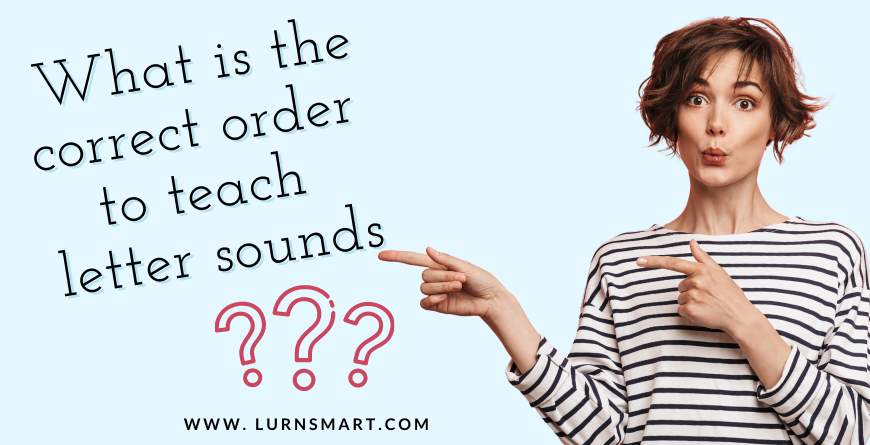
Now that we have the question, letter names or letter sounds first out of the way, the next critical question that most parents have is, what is the correct order or sequence to teach letter sounds to my child?
Again, there is no one correct order to teach letter sounds.
Some schools and phonics programs start by teaching letter sounds that occur frequently in simple words so children can start reading as soon as possible. So if you want to follow a sequence to teach letter sounds based on the frequency of occurrence then here is a sequence that you can follow:
However, by all means, you can teach the letter sounds in the alphabetical order A-Z.
Also, let me remind you that every child is different!
Some children might find certain sounds like r, v, f, challenging. So if your child has difficulty pronouncing a sound correctly, simply skip that sound. You can come back to that sound once your child has mastered the other easy sounds.
Q5: How many letter sounds should I teach at a time?
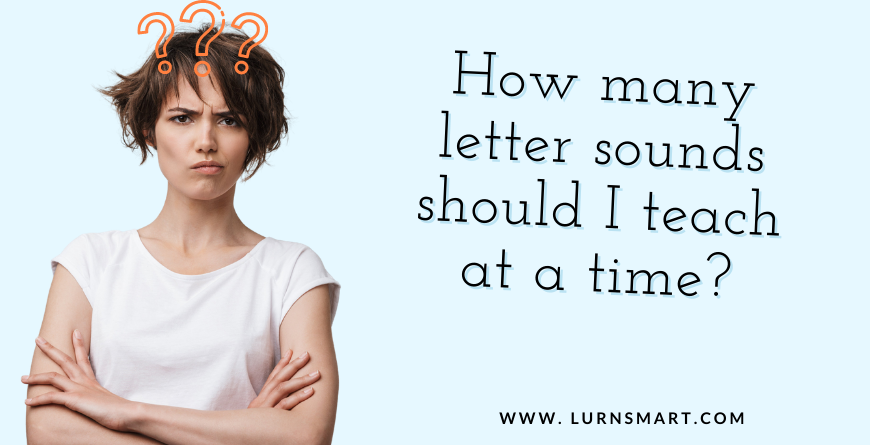
The next big question that parents have is, how many letter sounds should I introduce at a given time?
If your child is an English learner, I would say go with 1 letter sound at a time. Make sure your child learns the sound well before moving on to the next sound.
But take this advice with a pinch of salt because children are quick learners so aim for 5 sounds a week/two weeks.
And once your child masters a set of sounds (5 sounds), take some time to review the sounds that your child has learned so far so it is not forgotten.
Let you remind you that at the end of the day, it does not matter what order you teach or how many sounds you teach at a time, what truly matters is…..
- Is your child enjoying learning the letters and their sounds and is your child learning the correct pronunciation of sounds.
5 Interesting Activities to Teach English Alphabet Sounds to Kids:
Now that I have answered all the potential questions that you might have regarding letter sounds, it is time to learn some interesting ways to introduce letter sounds to kids.
There are tons of ways to do this, but here are 5 interesting activities to teach the English alphabet sounds to kids in the most fun, memorable way:
1. LETTER SOUNDS STORIES:
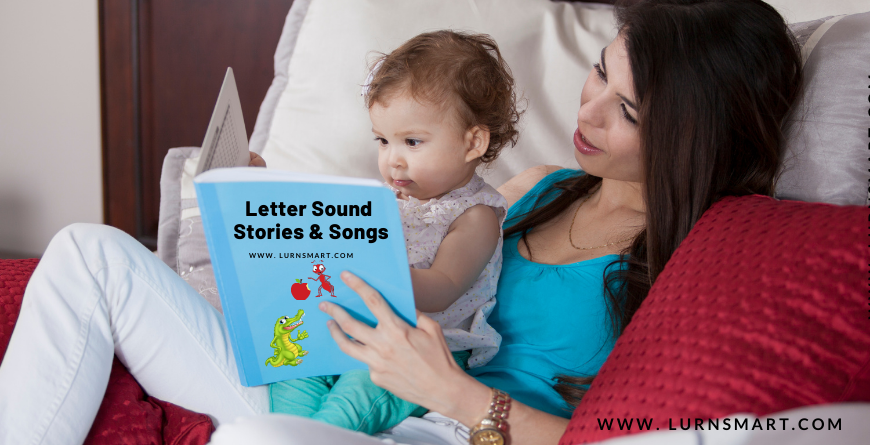
Stories create magic!
So when you tell a story that is silly and interesting, it certainly gets your child’s attention. Moreover, it can also help your child relate to things easily as well as recall what was learned effortlessly.
Therefore, when it comes to letter sounds, telling a story can make learning magical and memorable!
A, THE ANGRY ALLIGATOR
One day, A, the alligator saw an ant eating an apple.
Crunch! Crunch!
“I NEED THAT APPLE!” ordered A, the alligator
The ant ignored the alligator and continued to munch and crunch the apple.
A, the alligator got so angry that it screamed,
“I need that /a/ /a/ /a/apple now!
/a/ /a/ /a/ /a/ /a/”
What did A, the angry alligator say?????
/a/
Will the child ever forget?
No!
Will the child enjoy saying it?
Absolutely!
So as you can see, stories, apart from motivating the child to learn, will also make recalling the sound easy and fun!
You can check out our 26 Letter Sounds Songs & Stories Booklet to help your child learn the 26 letter sounds in a fun, interesting way. Apart from stories, you also have a song and action for each letter sound to make learning memorable!
2. HEAR/SEE AND ACT:
Now that you have taught your child the 26 letter sounds, it is time to play a fun game to practice recalling the alphabet sounds.
Note: If you have purchased our 26 Letter Sounds Song & Stories Booklet, you can use the actions mentioned in the book or you can use our Letter Sound Mnemonic Flashcards to play this game. If you haven’t purchased our 26 Letter Sounds Songs & Stories Booklet, you can still assign your own action for each letter sound and enjoy playing this game with your child.
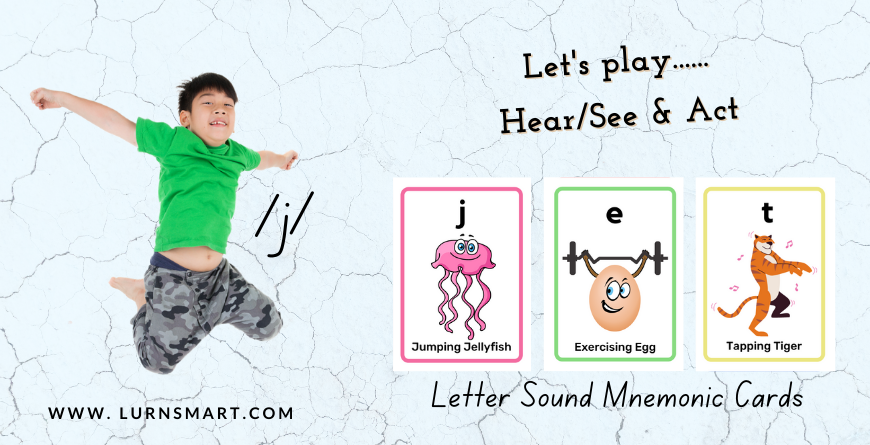
Purpose:
To practice hearing and identifying letter sounds and also associating letter names with their respective letter sounds.
Things Needed:
- Nothing.
How to Play:
Step 1: Pick a letter name/sound and say it aloud.
Step 2: Let your child hear the name/sound and do the correct action.
Example:
Game Variation:
Alternatively, you can show an alphabet flashcard or letter sound mnemonic flashcard or a magnetic letter and let your child say the name and sound as well as do the action.
3. HOW MANY SOUNDS CAN YOU POINT TO?
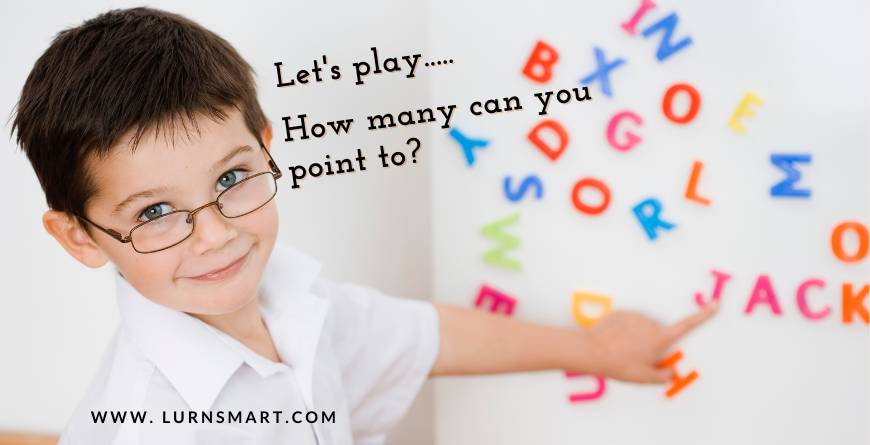
Purpose:
To help your child practice identifying the letter sounds instantly.
Things Needed:
- Alphabet flashcards/magnetic letters.
Instruction:
Step 1: Pick 5-10 alphabet flashcards/magnetic letters at a time and place them face up.
Step 2: Call out a sound and let your child pick the correct alphabet flashcard/magnetic letter.
Example:
This game is fun and it is also a great way to help increase the speed at which your child maps letters with their respective sounds.
If you don’t have alphabet flashcards, you can download our FREE Alphabet Flashcards to play this game!
4. I SPY

I Spy is a classical game and the best part is, you don’t need anything to play this game.
Purpose:
To help your child practice hearing and identifying the letter sounds as well as get your child familiar with print in the environment.
Things You Need:
- Nothing.
Instruction:
Pick a letter name or a letter sound and have your child find the letter or an object that begins with that sound in the environment.
Example:
When you are out shopping, you can say…
‘I spy the letter M or the sound /m/.
Your child should look around and find the letter M. Maybe, M in McDonald’s.
If this is easy for your child, you can challenge your child further by saying….
‘I spy a non-living thing that begins with the same sound as train.’
Your child should then look around and maybe find a trash can.
Or, you can say….
You get the point, right?
5. HANDS-ON LETTER SOUND ACTIVITIES:
Hands-on letter sound activities are engaging and can develop your child’s thinking skills and fine motor skills.
Check out our FREE Phonics Activity Printables on our freebie’s page for some fun time together!
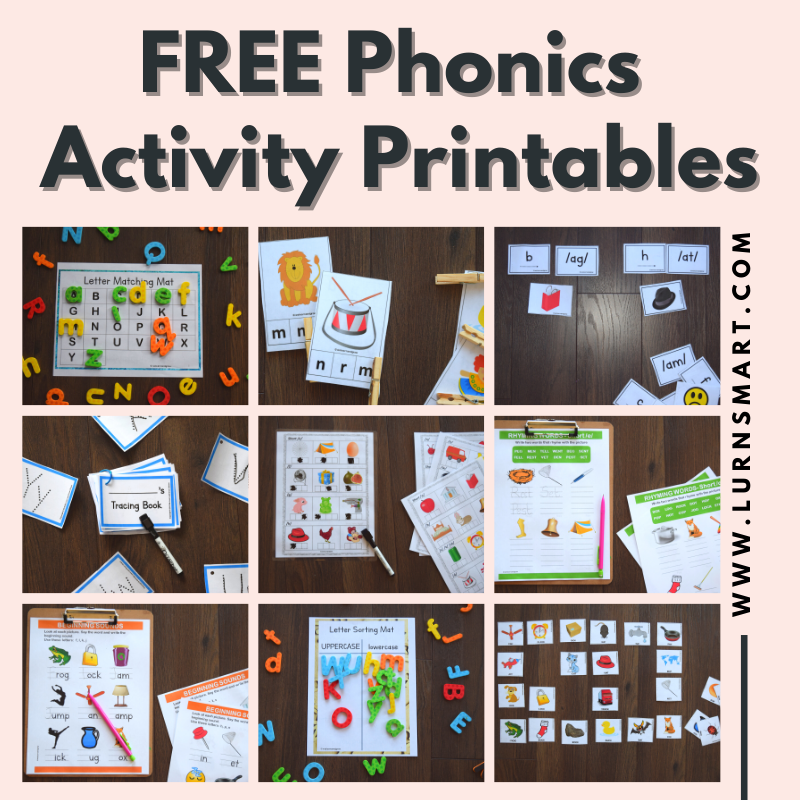
By the way, if you are looking for alphabet worksheets to help your child learn the letter names, shapes, and sounds in a more engaging and interactive way, then check out our Phonics Alphabet Bundle.
This bundle includes:
- Letter Sounds Stories and Songs Booklet to help your child learn:
- The 26 letter names and sounds in the most enjoyable and memorable way possible.
- 100+ Phonics Worksheets to learn and practice:
- Letter recognition
- Sound recognition
- Letter formation (uppercase and lowercase)
- Beginning sounds
I hope you found the tips and resources shared in this post useful. If you did, share this post with your friends coz’ sharing is caring 😉
Final Notes:
If you want to learn fun ways to teach the letter names and shapes, check out my blog post 7 Playful Ways to Teach Alphabet Letters for Kids + FREE Printables.
By the way, if you are supporting your child to read at home, then you might want to read my blog post Teach Your Child to Read Using Phonics: The Ultimate 7-Step Guide for step-by-step instructions and all the necessary resources that you might need to help your child read and spell easily!
If you are looking for a kid’s reading program, I welcome you to join our LURN Phonics Kid’s Reading Program which is a step-by-step parent-led program that is designed to help your child read and spell fluently and efficiently!
To take up this program, you do not need any prior phonics knowledge or teaching experience!
Everything is so simplified for you that all you need is a playful attitude and the enthusiasm to set aside 10-15 minutes a day to teach your child to read!
The best part is, our reading program is multisensorial and fun-based so no more tears while learning to read but lots of fun and play!
So go ahead and check out our LURN Phonics Kid’s Reading Program and I cannot wait to help you help your little one become an amazing reader and speller 🙂
You may also like


